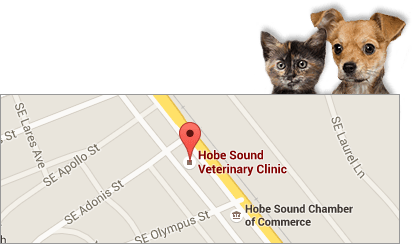Understanding dog nutrition is essential for keeping your pet healthy and happy. Just like humans, dogs require a balanced diet to meet their daily energy needs, support growth, and maintain a healthy immune system. However, many pet owners may not realize that nutritional needs vary depending on factors like age, breed, activity level, and health conditions. Feeding your dog the wrong diet can lead to health issues such as obesity, digestive problems, and even chronic diseases. In this article, we will explore the key components of dog nutrition, including protein, carbohydrates, fats, vitamins, and minerals. We’ll also discuss how to choose the right food for your dog’s specific needs and why certain human foods can be harmful. By understanding the basics of canine nutrition, you can ensure your furry friend gets the nutrients they need for a long, healthy life.
If there’s one thing we know for sure about Fido, it’s that he loves food. However, while your pup may happily gobble down anything you put in his dish, all pet foods are definitely not created equal. Here, a vet discusses doggy nutrition.
Reading Labels
Choosing the right dog food can be intimidating! Pet food manufacturers use slick marketing techniques to make their products look as good as possible. However, pet food labeling practices can be deceptive. Get into the habit of reading labels. Look for products that list meat as the first and most numerous ingredient. Avoid brands that contain high amounts of carbohydrate-heavy fillers such as wheat and corn, which really aren’t that great for dogs. Premium foods generally do have higher amounts of nutrients and better quality, so get Fido the best brand you can afford. Ask your vet for specific advice.
Life-Stage Nutrition
Your dog’s nutritional needs will change as he ages. Puppies require nutrient-dense food with lots of protein, fats, vitamins, and minerals, as well as suitable carbohydrates, to help fuel their rapid growth and playful frolicking. Adult doggy diets should focus on maintaining and promoting good health. Your canine buddy’s diet will still consist of protein, healthy fats, vitamins, and minerals, but his food will be formulated differently than a puppy’s. Once Fido becomes a senior, his needs will change again. Older pooches still require lots of protein, as otherwise they can lose muscle mass, but their overall calorie consumption may need to be lowered. Senior dogs may also benefit from eating more Omega-6 fatty acids and antioxidants, like Vitamin E and beta carotene.
Treats
It’s fine—and actually beneficial—to give your furry friend snacks, but don’t go overboard. While the occasional piece of bacon or sausage won’t hurt Fido, in general, try to offer him healthier treats. Sliced deli meat is fine. Cooked, plain, boneless meat, chicken, or fish is also safe. As a rule of thumb, keep treats to about 5 percent of your pet’s daily intake.
Serving Sizes
Serving sizes vary greatly from dog to dog and are closely tied to proper dog nutrition. Fido’s ideal food portions will depend on his age, breed, health, weight, and lifestyle. For example, a Chihuahua only needs a fraction of the calories a Great Dane requires! Proper portion control is crucial for maintaining a healthy weight and ensuring balanced dog nutrition. For more comprehensive information on this topic, you might find our article on Keeping Your Dog In Shape helpful. Always ask your vet for recommendations on appropriate serving sizes to support your dog’s specific nutritional needs.
Essential Guidelines for Dog Nutrition: AAFCO Standards and Feeding Practices
What are the AAFCO guidelines for dog nutrition?
The Association of American Feed Control Officials (AAFCO) guidelines ensure that dog food meets essential nutritional standards. These guidelines recommend that dog food includes a balance of protein, fat, carbohydrates, vitamins, and minerals, tailored to a dog’s life stage—whether puppy, adult, or senior. For puppies, nutrient-dense food with high levels of protein and fat supports growth, while adult dogs need balanced nutrition to maintain health. Senior dogs require similar nutrients but often at lower calorie levels. AAFCO guidelines also stress that food must be labeled as complete and balanced for specific life stages.
What are the recommended serving sizes and feeding schedules for dogs?
Serving sizes for dogs vary based on age, breed, weight, health, and activity level. Smaller breeds, like Chihuahuas, require significantly fewer calories than larger breeds, such as Great Danes. Proper portion control is essential to maintain a healthy weight. Consult a veterinarian for tailored advice on serving sizes. Generally, adult dogs should be fed twice a day, while puppies may need more frequent meals due to their growing needs. Portion control and regular feeding schedules help promote optimal health, and treats should make up no more than 5% of daily intake.
How should treats be incorporated into a dog’s diet?
Treats can be a healthy addition to a dog’s diet when given in moderation. They should make up no more than 5% of a dog’s daily caloric intake to avoid weight gain or nutritional imbalances. Healthier options include sliced deli meats or cooked, plain, boneless meats such as chicken or fish. While an occasional indulgence like bacon or sausage is fine, it’s best to prioritize nutritious treats. By keeping portions small and balanced with regular meals, treats can reinforce good behavior without compromising overall health.
What are the pros and cons of different types of dog food (dry, wet, raw, homemade)?
Dry dog food is convenient, affordable, and supports dental health by reducing plaque buildup, but may contain more fillers. Wet food is more palatable and hydrating, though it can be pricier and lacks the dental benefits of kibble. Raw diets provide high-quality protein and mimic ancestral diets, but pose a higher risk of bacterial contamination and nutritional imbalances if not carefully formulated. Homemade diets allow control over ingredients, but require careful planning to ensure they meet all nutritional needs, making veterinary guidance essential. Each type has its benefits and challenges depending on a dog’s needs.
What are the benefits and risks of grain-free diets?
Grain-free diets for dogs have both benefits and risks. Benefits may include reducing potential allergens like wheat and corn, which can cause digestive issues or skin problems in sensitive dogs. Grain-free foods often use alternative carbohydrates such as sweet potatoes, which may be easier for some dogs to digest. However, risks include a potential link between grain-free diets and canine dilated cardiomyopathy (DCM), a heart condition. Additionally, removing grains doesn’t necessarily make the food healthier, and can sometimes lead to an imbalance in essential nutrients. Always consult a vet before making dietary changes.
Do you have questions about your dog’s diet? Contact us, your pet clinic in Hobe Sound, FL, anytime! We are always happy to help! Our Vet Nutrition and Weight Management service can provide personalized guidance to ensure your dog’s nutritional needs are met and help maintain a healthy weight.




